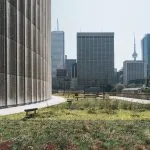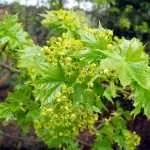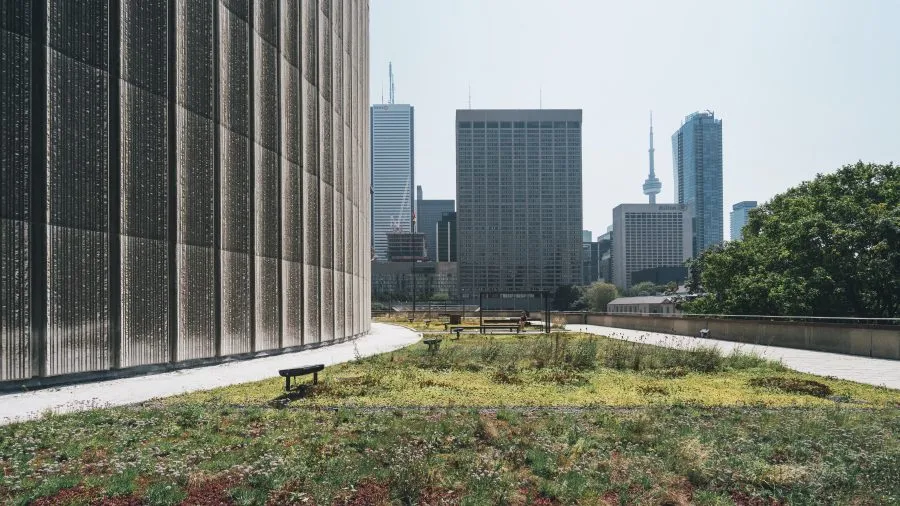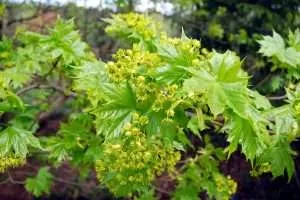
The Backyard Renovation You’ve Been Dreaming of
After years of sheltering at home from COVID, the value of backyards and outdoor space has exploded. This trend continues, with the cost of living, travelling and going out still high. Enjoying your backyard with friends and family is a unique pleasure/
Green spaces with plants and trees can decrease stress, as well as energy bills during the heat of summer (up to $200 a year!). Yards, decks and balconies can offer relief from a feeling of being cooped up, so it’s important to keep your trees and plants in mind as you plan changes.
This post will tell you how to protect your trees, shrubs and plants during a backyard reno. We’ll discuss how trees can get damaged, how to avoid it and what to watch out for when doing construction. Damaging trees doesn’t only impact the beauty of your backyard, it can also lead to unplanned costs — from fines, to damaged property, to the cost of removal and replacement. Learn how to avoid all that in the first place below.
Here’s what you need to know about planning and simple ways to improve your backyard green space for summer!
Tree Pruning for Enhanced Aesthetics
If you’re not looking for a big backyard renovation but want your green space to look its best, a quick trim by a certified arborist can help. One of the easiest and cheapest ways to improve your outdoor space is to make sure your existing trees and plants are in good shape.
Spring and early summer is a great time to catch up on any pruning your trees need. Tree trimming by an arborist can help by ensuring your trees are in good health, with a balanced crown creating a full and healthy appearance and allowing enough sunlight to reach your tree.
“Cleaning” a tree is one of the most common types of pruning, removing dead, damaged or broken branches to improve a mature tree’s look. Pruning can also cut back extra branches or branches that are blocking a view from your yard or windows. Clearing away excess growth from your tree can open up a view and bring more light in to your house and backyard, creating a brighter space for you to enjoy all summer long.
Don’t forget about shrubs and plants! Trimming hedges and using treatments like fertilizer and soil amendments in your garden will improve plant health so that your plants and garden are looking their best for the summer months. Not everyone needs or wants a COVID backyard reno – sometimes just a touch up of existing trees and plants will do.
Big Backyard Renovationss and Your Trees
If you’re putting in more elaborate features like a new deck, pool, or outdoor kitchen, you may need an arborist report completed before you can obtain a construction permit for your COVID backyard remodel. An arborist will look at how the planned construction will affect any trees in your yard. It’s especially important if there are large mature trees in the area where the construction is intended, as these trees have larger root systems and can affect ecosystems and property values of your home and potentially neighbouring homes.
If the construction involves removing trees, you’ll need an arborist report to apply for tree removal permits as well. A qualified arborist or tree service can handle the report and application for the permit. Toronto requires a permit to remove trees over 30 cm in diameter, while neighbouring communities have different bylaws — Markham requires a permit for trees over 20 cm in diameter, for example, while Oakville requires a permit to remove any tree over 15 cm in diameter.
Protecting Trees During Backyard Construction
During your backyard reno, you’ll need to protect your trees. Not only do they add value to your home, you could face penalties and fines if they are damaged or killed. An arborist report will assess which trees may be affected by your planned construction project. Your arborist can make recommendations for tree protection during construction.
Trees can be damaged by heavy equipment being moved around the yard or stored against a tree, as well as damaged by accidents or careless operation of equipment. Many homeowners are unaware that the roots of trees are quite shallow, and when the ground around them gets compacted they struggle to absorb water and nutrients. Storing construction materials, equipment, or significant foot traffic under the tree can result in compacted earth, which is harmful to trees. Bark can easily be skinned off trees by various types of construction equipment, causing damage to the tree and leaving it more vulnerable to disease, rot, and further damage. A physical barrier or fencing around trees can help protect them while your property undergoes outdoor renovations.
Improperly disposed chemicals and construction materials on lawns can also damage your trees and landscaping. Contractors who pour out mixing liquids onto grass, under trees, or near shrubs can significantly alter the soil, sometimes resulting in the death of valuable plants.
Root Protection
Protecting tree roots is one of the most important considerations in planning construction and backyard. Your tree roots likely extend much further than you think, especially for large and older trees. Tree roots extend outwards from the tree, but may only be up to 30 cm or 1 foot deep.
This is where your arborist can really help you out, examining where your tree’s root systems extend to, as well as the root systems of neighbours’ trees, in the case of building close to property lines. You’ll want to ensure any digging doesn’t damage the root systems of trees and that the roots are being protected along with the trunks and canopies of trees during any work being done.
Injured roots can gradually cause branches to die back in your tree and the tree to weaken over time. It’s also important to make sure your trees are getting enough water during construction, especially if the work is happening during hot and dry summer weather.
Hardscaping around trees: What You Need to Know
Thinking of putting in pavement, paving stones, a stone patio, retaining wall, pool, or other hard surfaces in your yard? Hard surfaces around trees prevent the ground from absorbing all the available water from rainfall. Instead of falling onto soft ground, being absorbed into the soil, and taken up by the tree with essential nutrients, hardscaping prevents water from reaching the soil. The less soft space available to absorb water around a tree, the more under stress the tree will become.
Runoff from asphalt, concrete, patio stones, and other hardscaping will also need to be managed. Hardscaping needs to be planned with drainage in mind. If the hardscaping doesn’t allow for sufficient drainage, it can cause issues over time with your plants, tree growth, and tree roots, along with damage to the hard surface itself, including cracking, chipping, or sinking.
It’s also worth keeping in mind local hardscaping bylaws: the City of Toronto typically requires a minimum of 75% of your yard to be soft landscaping, depending on yard size. Artificial turf isn’t considered soft landscaping. Homeowners should also know that laying artificial turf often involves compacting the soil beneath the turf and laying down a limestone screening, both of which are harmful to trees and other plants. Limestone significantly alters the acidity of soil, making it unfriendly to many different plants and trees while soil compaction damages roots and lessens the ability of the tree to absorb water.

Tree Safety for Your Play Areas and Patios
Another reason to stay up to date with tree maintenance is the health and safety of your home’s residents and guests, especially if you have young children or grandchildren who play in your yard. Regular tree pruning can clear off dead or dying branches, reducing the risk of any branch breaking or falling in a rain or wind storm.
This helps keep your deck or play area safe for users, along with avoiding clean up after storms and making sure any new backyard additions, like decks, lawn furniture, outdoor kitchens, fireplaces or pergolas don’t get damaged by falling branches.
What to Consider With a New Pool
Putting in a pool? If there are trees in the area, you’ll need an arborist report for your building permit for the pool. The arborist will investigate any tree removals that need to occur and which trees in and around your yard may have root systems that would be affected by a pool.
Tree roots don’t go as deep as many people think, so they won’t simply grow down below an in-ground pool. You may need to consider trees that seemed farther away from the planned pool location in the pool design.
You’ll also want to make sure your builder installs proper drainage for the pool into the municipal sewer system — chlorinated water draining into your, or a neighbour’s garden is damaging to trees and ecosystems and can kill trees, plants, and grass over time.
DIY COVID Backyard Renovations
If a new deck, outdoor kitchen, or pergola aren’t in your budget, you can still make some changes and take advantage of any outdoor space you have! Tree trimming can save you money in the long run by preventing damage and accidents before they happen, as well as more affordably opening up your views and creating a healthy, leafy canopy over your space. Not every backyard needs a full COVID backyard reno.
Fertilizing, compost and other plant healthcare treatments are affordable ways to take care of your garden, trees and plants in front yards or back yards. Planting a tree can also be a way to bring more shade to your yard over time, and unlike removing a tree, you don’t need a permit for this.
Adding new plants, an in-ground or container garden, and new lawn furniture can also affordably spruce up your yard for the family and any visitors!
Once you’ve gotten your yard cleaned up, construction, pruning and watering completed, it’s time to sit back, relax, and enjoy your green space! Open up a cold drink, and, as public health regulations permit, call up a friend or neighbour to safely visit outdoors.
Is your backyard ready for a makeover?
Learn more about the cost of tree services like large tree removal.
If you need an arborist for tree maintenance or a pre-construction report, contact Vista Tree Management today to help with your backyard COVID reno, or any other questions you may have!







